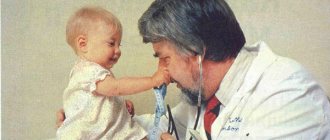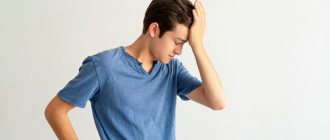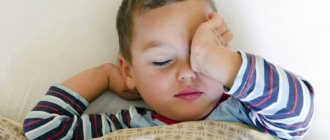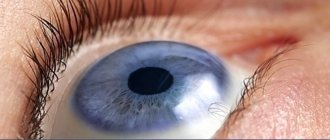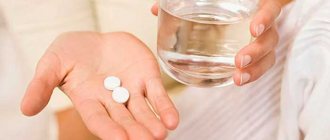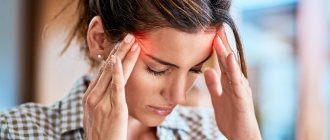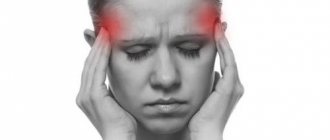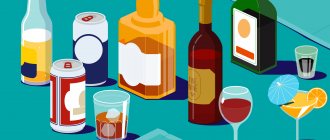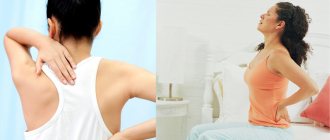Causes of headaches in children
Doctors divide headaches into primary and secondary . Primary ones are independent diseases. In childhood, these are mainly migraines and tension headaches. In secondary cases (cephalgia) it is only one of the symptoms of another disease. There are more than 150 known diseases that are accompanied by headache complaints.
The cause of headaches is always a violation of the blood supply to the brain. But why this happens - there can be quite a few possible answers to this question. For example:
- Imperfection of the body's autonomic system,
- Beginning colds (prodrome),
- The presence of any serious disease: kidney disease, endocrine disorder, anemia, rheumatism and others;
- Toothache, which provokes headache;
- Consequences of head injury;
- Excessive nervous tension associated with stress, long hours of work, conflict, serious experience, etc.
- Influence of the external environment: prolonged stay in a stuffy room, increased solar radiation, prolonged exposure to the sun, etc.
Headaches can occur as a reaction to changes in the environment or in the body (reactive), poor lifestyle: when a child has too little or too much sleep, spends too much time in front of the computer or TV screen, is not physically active, or eats incorrectly. After the initial examination of the patient with complaints of headaches, the pediatrician will refer him for the necessary consultations and examinations, depending on the identified disorders. In most cases, children with complaints of headaches are observed and registered with a neurologist.
Treatment of headaches and dizziness in children
For each child, treatment tactics are selected strictly individually, but it is always comprehensive. In this case, the doctor takes into account not only the nature of the detected pathological changes, but also the age of the child, existing concomitant diseases and other factors. Therefore, even with the same diagnosis, two different children may need different treatment.
So, the main components of therapy are usually:
- drug treatment;
- manual therapy;
- exercise therapy;
- physiotherapy.
The neurologist may also recommend reviewing the child’s work and rest schedule, taking measures to increase physical activity, increasing the number and duration of walks in the fresh air, normalizing nutrition, purchasing an orthopedic mattress and pillow, etc.
Small children can only be bathed in water whose temperature is not higher than 37°C. Hotter water can cause blood vessels to dilate, which can cause another attack of dizziness.
Drug treatment
The goal of drug treatment is to improve the child’s well-being, relieve the inflammatory process, normalize blood circulation and improve the quality of transmission of nerve impulses. Therefore, for any diagnosis it includes:
- NSAIDs;
- vitamins;
- drugs that improve blood flow.
Additionally, treatment can be supplemented with other drugs that will help eliminate existing disorders, for example, muscle relaxants, cardiac drugs, chondroprotectors, antidepressants, adrenergic blockers, etc.
Manual therapy
Manual therapy is considered one of the most effective and safe methods of treating spinal pathologies in children, but only when performed correctly. Inept actions or incorrectly chosen force of influence can cause significant harm to the child and provoke the development of complications. Therefore, when choosing a specialist, you should be very careful and not trust the health of children to non-professionals with insufficient experience.
Manual therapy of the cervical spine requires particularly high qualifications of the doctor and caution during its implementation.
The essence of the method is a targeted impact on the spine with your hands using methods of mobilization, manipulation, rhythmic mobilization, post-isometric relaxation, etc. This allows you to:
- return the vertebrae to the correct position;
- relieve pressure on the nerves;
- align the spine;
- reduce pressure on the vertebral arteries.
Also during the session, the chiropractor also works on soft tissues, as in a therapeutic massage. This helps improve blood circulation, activate metabolic processes and eliminate muscle spasms, which significantly improves overall well-being. But still, the main goal of manual therapy is direct work with the spine. Moreover, the method has virtually no contraindications, is characterized by the absence of side effects, which no other drug can boast of, and also provides a positive effect on the entire body.
Due to competent study of the entire spine and especially the problem area, it is possible to:
- eliminate the cause of headaches, dizziness and other symptoms, and therefore them;
- increase overall performance;
- strengthen the immune system and adaptive capabilities of the body;
- eliminate the risk of developing diseases of internal organs innervated by the compressed nerve;
- increase neck mobility, eliminate functional blocks;
- improve posture.
Manual therapy can be performed even on infants and children with serious pathologies.
For each patient, the number of sessions and types of manual influence are selected individually. On average, about 10 procedures are required, although a noticeable improvement in well-being can be noticed after the first one. But it is important not to give up treatment after receiving the first results. They must be secured, otherwise the achieved effect will be lost.
Exercise therapy
Physical therapy is one of the simplest, most accessible and effective methods of treating spinal diseases. For each child, the lesson program, as well as exercises, are selected separately, taking into account the diagnosis and general level of physical development. You should not try to find and start performing any exercise therapy complex on your own, since some types of movements or an incorrectly selected load can do a disservice.
Exercise therapy classes begin to be carried out outside the acute period of the disease. Initially, it is recommended to study in special groups or individually, but in any case under the supervision of a specialist. He will help a child of any age master the correct technique for performing each exercise and select the optimal load.
After the program has been finalized and the child follows it flawlessly, it is allowed to continue classes at home. But the effect of physical therapy will only be with daily exercise. It is important to avoid haste, sudden movements, and overexertion. And if pain appears or the condition worsens, you should immediately stop exercising and consult your doctor.
Headaches can come in different ways. How to find out the reason depending on the complaints
Pain in the back of the head.
If a child, complaining of a headache, points to the crown and back of the head, most often we are dealing with a tension headache. It usually occurs in the afternoon and is associated with posture, when the child is already quite tired: he spent a lot of time sitting during the day. About a third of visits to the doctor complaining of headaches are due to this type of pain.
Tension headaches are associated with overload of the neck muscles. Invite your child to stretch his neck and shoulders, do calm exercises, and lie on the floor to relieve tension from his back and neck.
Pain in the temples.
Pain in the temporal region often indicates an autonomic disorder. Here it is worth looking for an individual method, but most often either resting in a well-ventilated area or a short walk helps.
The forehead and top of the head hurt.
This is usually pain in the first half of the day, and can be caused by increased intracranial pressure. If such pain recurs systematically, you should consult a doctor - a pediatrician, an ENT doctor and undergo additional examinations.
Half of my head hurts
. This seems to be a manifestation of migraine: unfortunately, it can start at an early age. This is a sharp pain that occurs suddenly, at any time during the night, and intensifies within 10-15 minutes from mild to almost unbearable. In this case, the most important thing is to stop the attack as soon as possible. If your child has a history of migraines, it is best to give him a pain reliever as soon as he begins to complain of increasing pain.
Types and symptoms
1. Migraine is an independent pathology not associated with a disease, and is manifested by attacks of intense pain, often of a pulsating nature. It is localized on one side of the head in the frontotemporal region, less often in the orbital region, and is often accompanied by vomiting, after which relief comes. In young children, migraine is bilateral.
2. Tension headache - mild or moderate, squeezing or pressing in nature, bilateral. Localization in the frontal and frontotemporal regions. Duration - several hours. It often goes away on its own after rest. The reason is tension in the muscles of the head and neck.
3. Headaches due to infections occur during the period of illness or precede it. Accompanied by fever and catarrhal symptoms.
4. Headache due to neuroinfections. Localization - any. The nature of the pain is bursting. Accompanied by vomiting, convulsions, and fever.
5. Headache due to brain tumors is a consequence of intracranial hypertension. The nature of the pain is bursting, occurring more often in the morning, accompanied by nausea or vomiting, which does not bring relief.
6. Headache in infants. Crying appears for no apparent reason, the cry is monotonous. There is excessive regurgitation, “fountain” vomiting, and sleep disturbances. A large fontanel protrudes above the level of the skull.
7. Inflammation of the trigeminal nerve. This nerve provides sensation to the face. The cause of inflammation can be hypothermia, injury, infection (often the herpes virus). It manifests itself as attacks of intense throbbing pain (in the cheeks, jaw, forehead). Sometimes accompanied by tearing and drooling.
8. Headache associated with eye strain. When reading books, drawing, watching TV, or using gadgets, the optic nerve receives a large load that the child’s body cannot cope with. Painful sensations of a pressing nature appear without nausea and vomiting, pain in the eyes, and tearing.
When do you need to see a doctor urgently?
1. Severe and sudden headache
2. Unusual, shooting pain, accompanied by noise in the ears and head.
3. When changing body position, pain intensifies
4. Headache starts in the morning
5. Severe pain due to injury
6. If the pain is very intense and is accompanied by:
- increase or decrease in blood pressure
- weakness or loss of sensation in the limbs, speech impairment
- loss of sensitivity, numbness of the skin of the face, tongue
- convulsions
- change in consciousness
Indications for emergency hospitalization are to exclude neuroinfection, hemorrhage, and space-occupying formations.
Headaches in a 10 year old child
Headaches in a 10-year-old child: causes, symptoms, what to do in this case. A 10-year-old child often has a headache and may feel dizzy. Most parents think that the child is tired or has a cold. And this could be one of the symptoms of SVD. Let's take a closer look at why a 10-year-old child has a headache.
Is your child 10-12 years old and often has a headache? This is not a childish whim or fiction, as many parents might think. A headache in a child may indicate various disorders in the body or serious diseases.
Nature of headache
Most often, headaches are caused by changes in blood pressure or problems with the cerebrospinal fluid. The skull is an absolutely closed system. Only the opening at its base allows the spinal cord to enter. It is filled with three components: brain (80%), blood (10%) and cerebrospinal fluid (10%). They are all largely composed of water and therefore do not compress. When pressure increases in one structure or another, it immediately begins to put pressure on neighboring ones and causes pain.
The brain consists of neurons and their processes, but has no receptors, including pain ones. The membrane of the brain, which is a protective system enclosing the brain, is abundantly filled with receptor fields. As soon as pressure (of any nature) increases in any of the brain tissues, the receptor fields immediately signal pain in the head.
Very often, attending physicians who are approached with complaints of headaches do not pay any attention to the condition of the cervical spine. But often changes in blood and cerebrospinal fluid pressure are associated precisely with protrusions, herniated intervertebral discs, and instability in the cervical spine.
Why can a 10 year old child have a headache?
15% of people experience headaches in childhood. Therefore, it is important to go for a consultation with a specialist from the first complaints and determine the cause of the headaches, since an advanced disease can develop into a chronic disease and cause a lot of trouble to a person throughout his entire life.
In early adolescence, the child’s body is just beginning to rebuild and at the same time remains childishly fragile. Every second schoolchild experiences a headache from time to time, but most prefer to do nothing to eliminate it. Pain affects their academic performance and psychological health, and interferes with healthy interaction in different areas of life.
The causes of pain in the head in a child can be of different nature:
There are:
- PRIMARY HEADACHES:
- CLUSTER HEADACHE.
Occurs in series, several attacks per day for a number of weeks, or even months. Then it suddenly goes away and may not bother you for months, or even years. The duration of the attack is from 15 minutes to one hour. It is characterized by acute pain around one eye and behind the eye, a feeling of stuffiness in the ear, the eye may turn red and watery. Such pain is often seasonal. Cluster pain is subject to circadian rhythms (biological clock), which are controlled by the hypothalamus. Therefore, malfunctions of the body’s biological clock, climate change, time zone change, disturbances in sleep and wakefulness, overwork, stress, and hormonal disorders can cause cluster pain. - MIGRAINE
. It usually appears as a throbbing headache in one part of the head and is accompanied by vomiting and nausea. The reasons for it are either hereditary (inherited from the mother), or lie in poor nutrition. - TENSION HEADACHE
. These are aching, dull, monotonous, squeezing, squeezing pain sensations. More often the pain affects both halves of the head, but it can also be one-sided. It can appear in certain areas (frontal, parietal, occipital), can migrate from one part of the head to another, begin at one point and “spread” throughout the head. The pain can be localized only in the head, but often spreads to the neck and shoulder girdle. - NEURALGIA
. With this pathology, the pain is usually paroxysmal in nature: acute, reminiscent of an electric shock, repeating after a certain time. Typically, neuralgia can be triggered by infection, diseases of the cervical vertebrae, as well as inflammation of the trigeminal nerve. - SYMPTOMATIC HEADACHES
The reasons for which may be:
- neoplasms
- traumatic brain injuries
- infectious diseases (meningitis, encephalitis)
Due to the fact that headaches, as you can see, can be a symptom of life-threatening diseases, when an INTENSIVE HEADACHE
An urgent consultation with a neurologist is required, and, if necessary, hospitalization in the neurological department for an accurate diagnosis and further treatment.
Symptomatic headaches can also be caused by:
- DISEASES OF THE CERVICAL SPINE IN CHILDREN AND ADOLESCENTS,
such as
functional
instability, early degenerative-dystrophic changes in the spine, malformations of the vertebrae and blood vessels of the cervical spine; - DISEASES OF ENT ORGANS, ENDOCRINE PATHOLOGY;
- VEGETATIVE DYSFUNCTIONS
(VD) are one of the most common diseases among adolescents.
The autonomic nervous system performs important functions in preserving and maintaining the constancy of the internal environment of the body. Violation of the functioning of the ANS manifests itself in autonomic dysfunctions, which lead to a “failure” in the functioning of the internal organs and systems of the body. Common symptoms are increased irritability, anxiety, restlessness, increased fatigue, decreased performance, constant internal tension, bad mood, tearfulness, sleep and appetite disorders, and various fears.
Clinically and pathogenetically, autonomic dysfunctions are presented
:
- Neurocirculatory dystonia
(angiodystonia - primarily of the cerebral vessels), which is manifested by persistent headache, dizziness, psycho-emotional instability, anxiety, and increased fatigue. - VVD (vegetative-vascular dysfunction)
is manifested by complaints mainly from the cardiovascular system (arterial hypertension or hypotension, cardialgia, heart rhythm disturbances, myocardial contractile dysfunction syndrome, shortness of breath...), as well as frequent headaches. - Vegetative-visceral dysfunctions
- manifested primarily by disturbances in the functioning of internal organs (nausea, abdominal pain, biliary dyskinesia, chest pain, tachycardia, tendency to be overweight, low-grade fever, wetness of the palms and feet, redness of the skin, frequent urination, weather dependence, headache, drowsiness). - Paroxysmal autonomic failure (PVF)
- manifests itself in vegetative crises, often with “panic attacks” and headaches.
Thus, the causes of primary headaches in a child can be:
- emotional stress.
- hormonal changes in the body.
- moving to another country, changing the usual climate.
- significant physical, mental and emotional stress.
- exacerbation of chronic diseases.
- neurotic disorders.
Parents also need to remember that by the age of 11, children begin the transitional age stage, so there are frequent cases of PSYCHOGENIC
headache (psychalgia) due to nervous tension or emotional problems. Parents should pay close attention to their child’s experiences, not overload them with physical or intellectual stress, and let them know that they are needed and loved. Hormonal fluctuations occur especially often in girls before approaching menstruation, which begins between the ages of 11 and 16. In girls, autonomic disorders occur approximately 3 times more often than in boys.
If you notice headaches, frequent dizziness, sleep disturbances, or rapid fatigue in your child, do not hesitate to contact a neurologist for advice. Against the background of even initial, weak manifestations, serious health problems can develop.
At the Bersenev Medical Center, children with complaints of frequent headaches and dizziness, in addition to a standard examination, are prescribed a complete diagnosis of the cervical spine in order to identify the effect of spinal pathology and myofascial dysfunction on a specific vascular system and its control apparatus (that is, on the autonomic structure ). Outpatient treatment sessions in this case include neurometameric reflexology with metameric administration of medications into reflexogenic zones, as well as metameric acupressure. An individual home treatment program is drawn up for each patient.
You can make an appointment with a pediatric neurologist at the Bersenev Medical Center by calling the children's department or calling the contact center (044) 238-22-31.
By following all medical recommendations and completing a full course of treatment using the metameric method, you will help your child get rid of frequent headaches and dysfunction of the autonomic nervous system.
Where can I get help from a pediatrician in Saratov?
Frequent headaches in childhood can be a cause of pathology. In order to determine what exactly is happening to your child, you need to seek advice from a specialist. First of all, you need to make an appointment with your child to see a pediatrician.
The First Children's Medical Center offers assistance from highly qualified doctors working with children of all ages. Our Center provides everything for the comfort of children and parents. If you cannot visit a pediatrician (Saratov is not your city, and you cannot get to the Center) in person, then you can sign up for an online consultation with one of our specialists.
You can make an appointment for a consultation from 8.00 to 20.00 by calling (8452) 244-000. Reception is by appointment only.
